Cirrus planes are advanced single-engine aircraft renowned for their safety features and performance. These planes incorporate cutting-edge technology in their design and construction. Cirrus planes offer options for sale to individuals seeking reliable personal or business aviation solutions. The sale of Cirrus planes involves specific considerations due to their unique specifications and market demand. Explore available models, technical specifications, and pricing structures. Buy a Cirrus plane to meet your aviation needs.
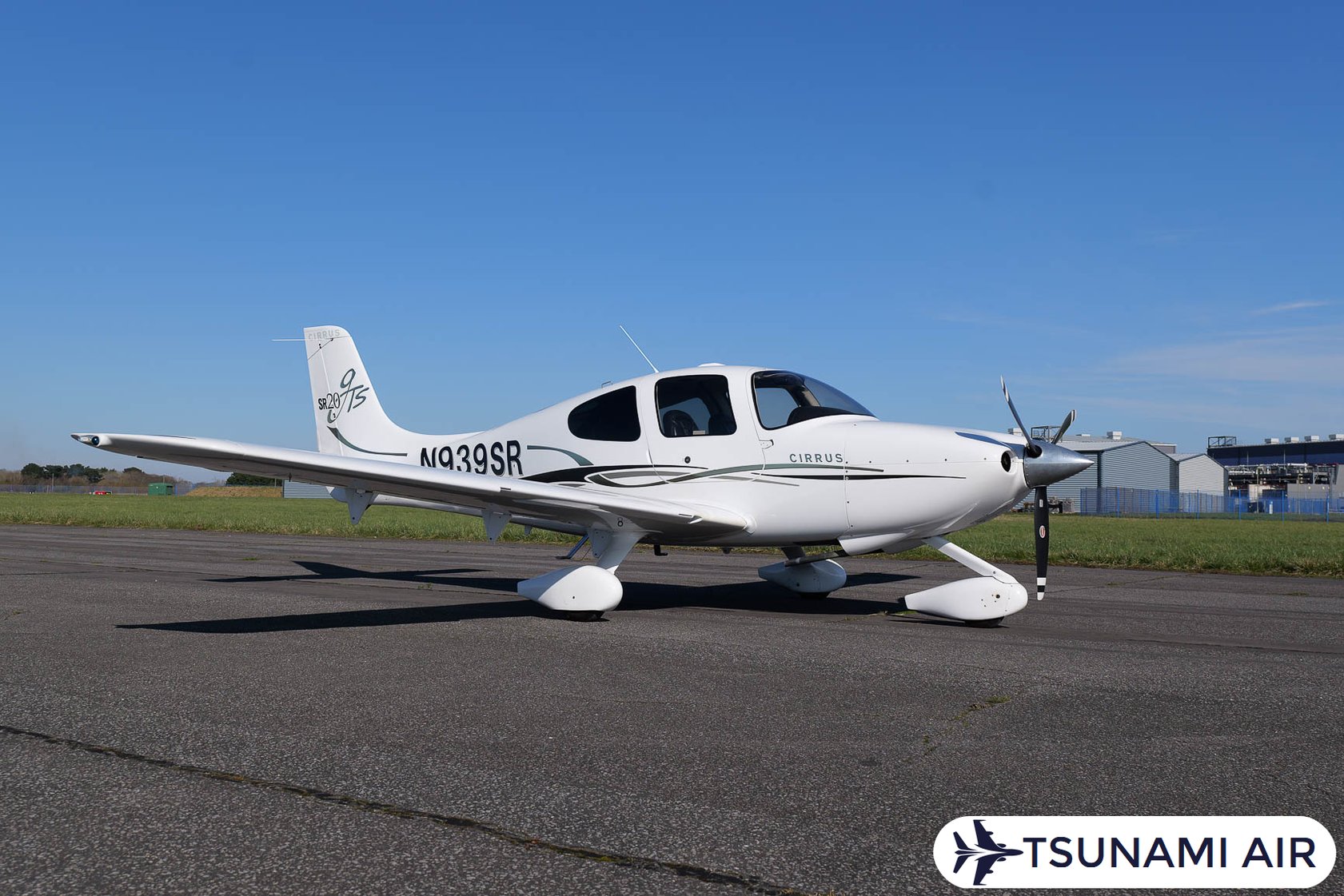
USD $160,000.00
Single EngineReg Number
N939SR
Total Time
2362 hrs
Location
United Kingdom
Year
2007
Seller: AT Aviation
Phone: +441404642006
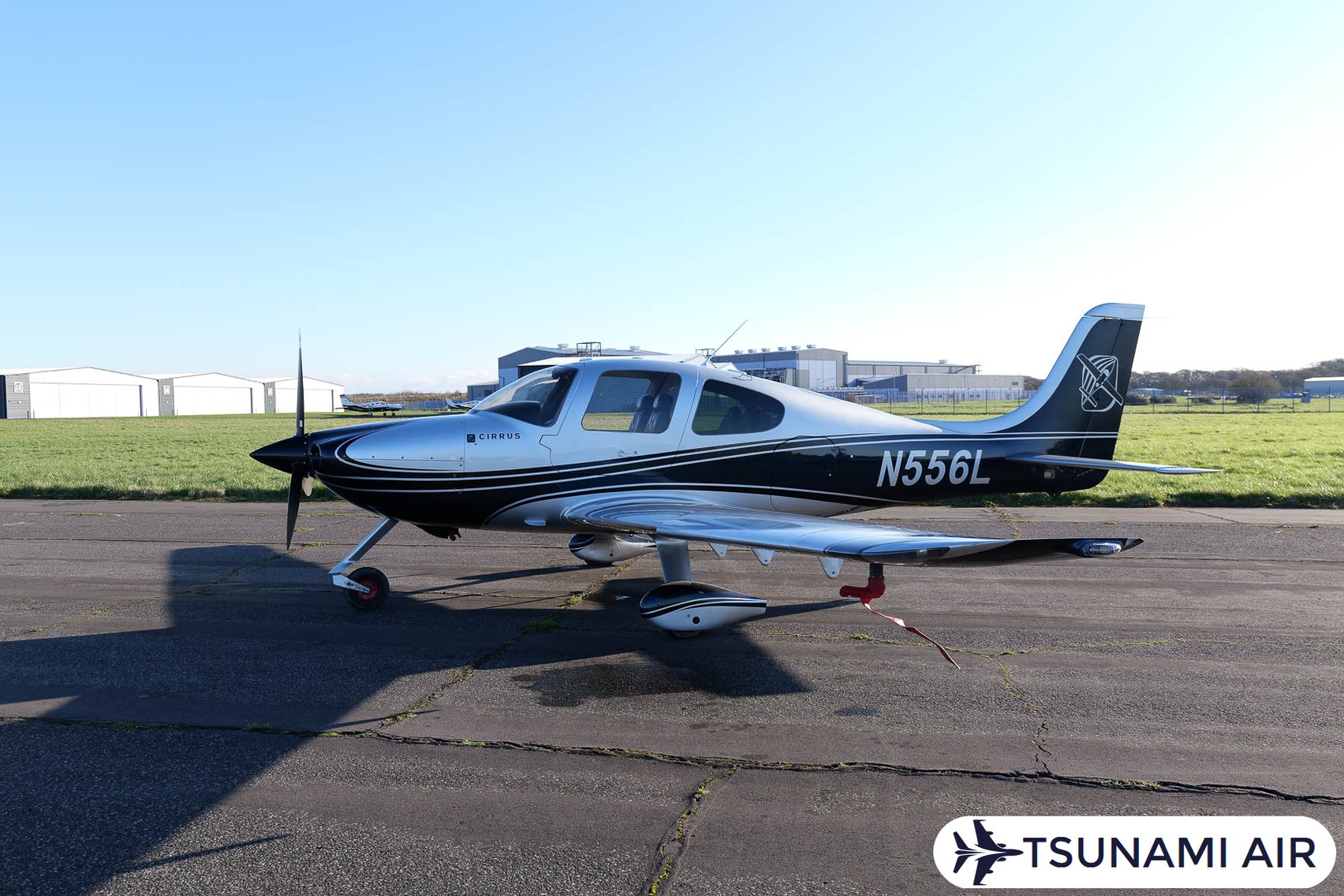
USD $170,000.00
Single EngineReg Number
N556L
Total Time
2105 hrs
Location
United Kingdom
Year
2001
Seller: AT Aviation
Phone: +441404642006
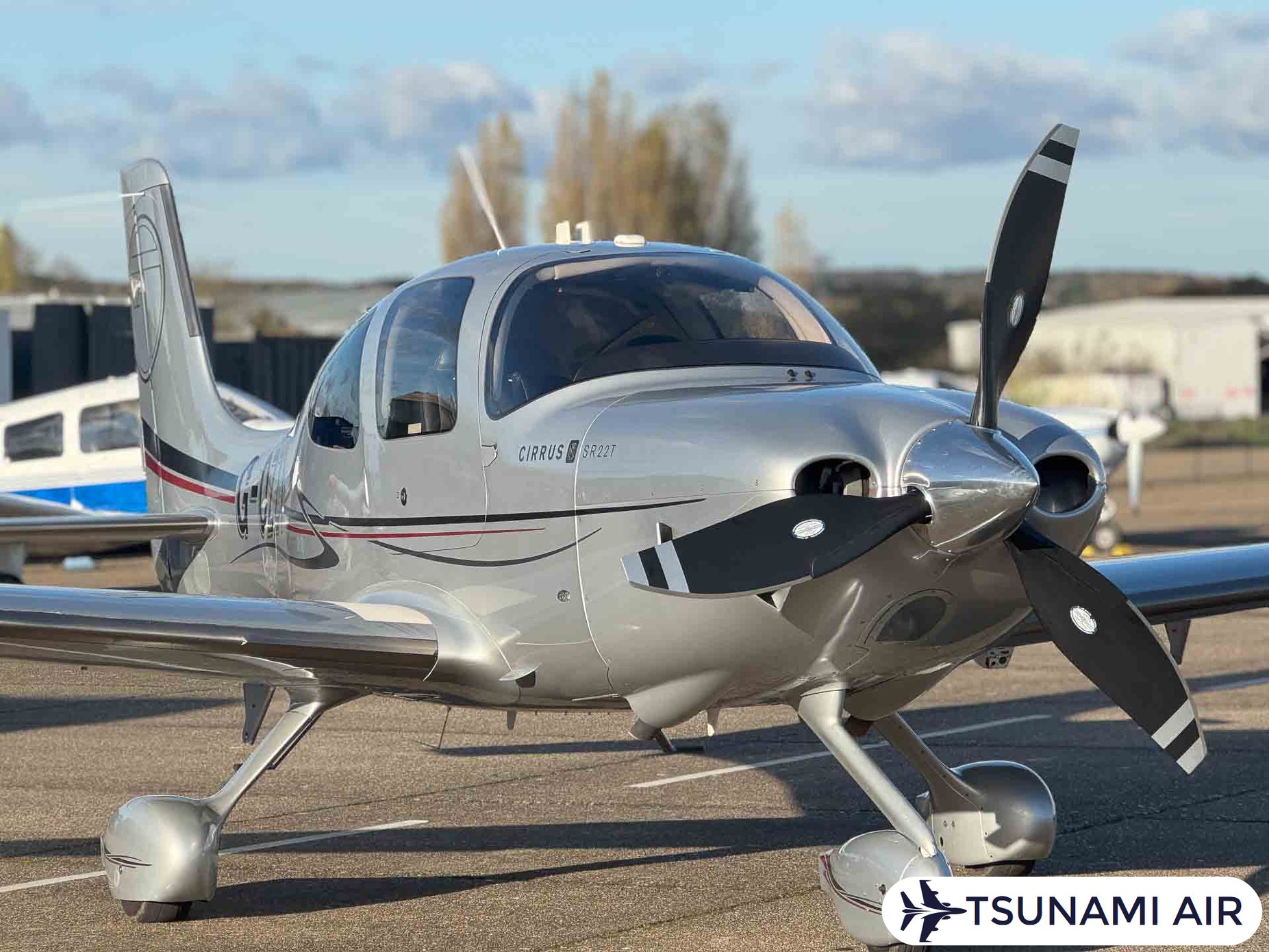
USD $400,000.00
Single EngineReg Number
G-OZZT
Total Time
920 hrs
Location
United Kingdom
Year
2011
Seller: AT Aviation
Phone: +441404642006
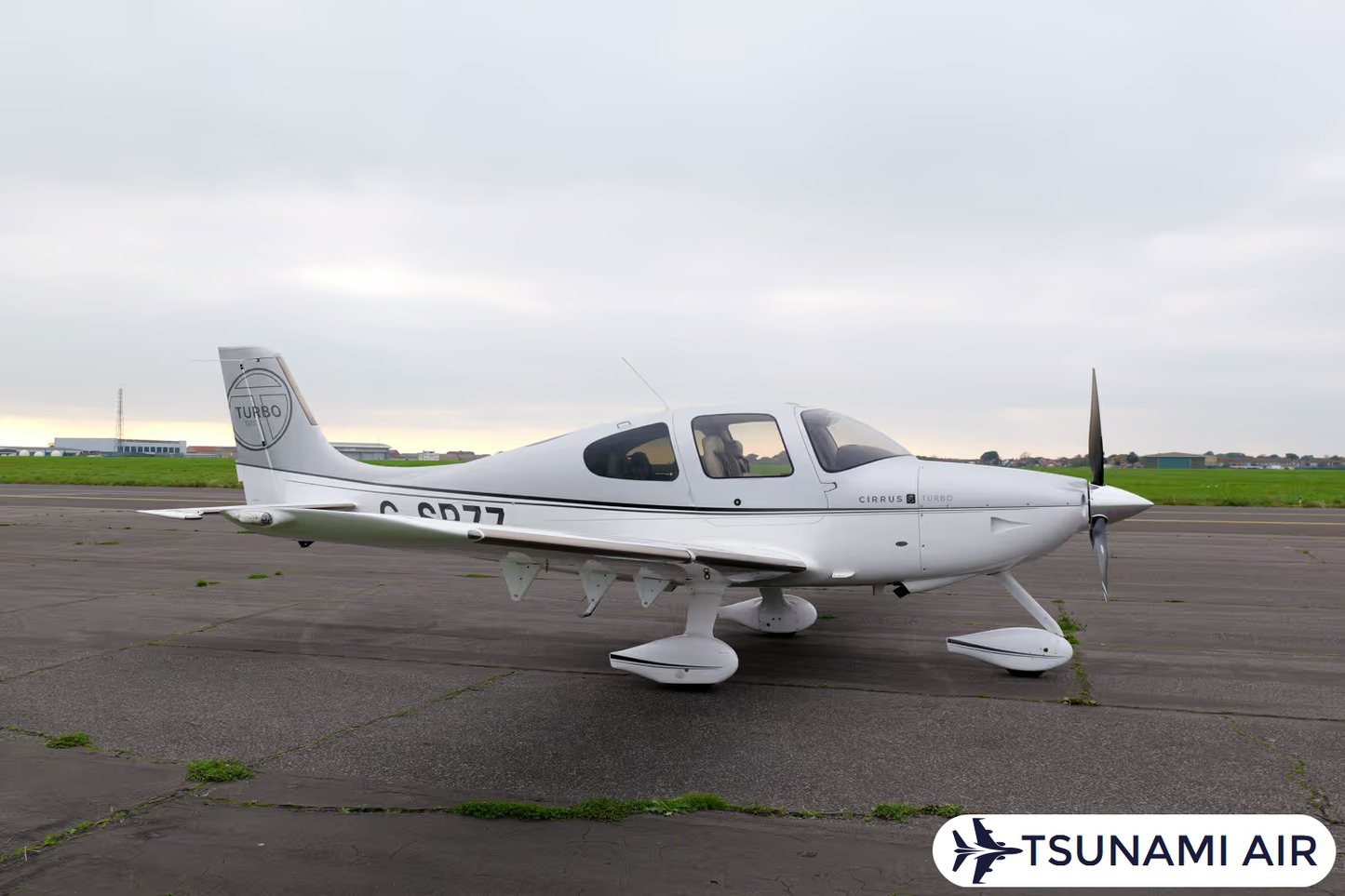
USD $460,000.00
Single EngineReg Number
G-SRZZ
Total Time
670 hrs
Location
United Kingdom
Year
2010
Seller: AT Aviation
Phone: +441404642006
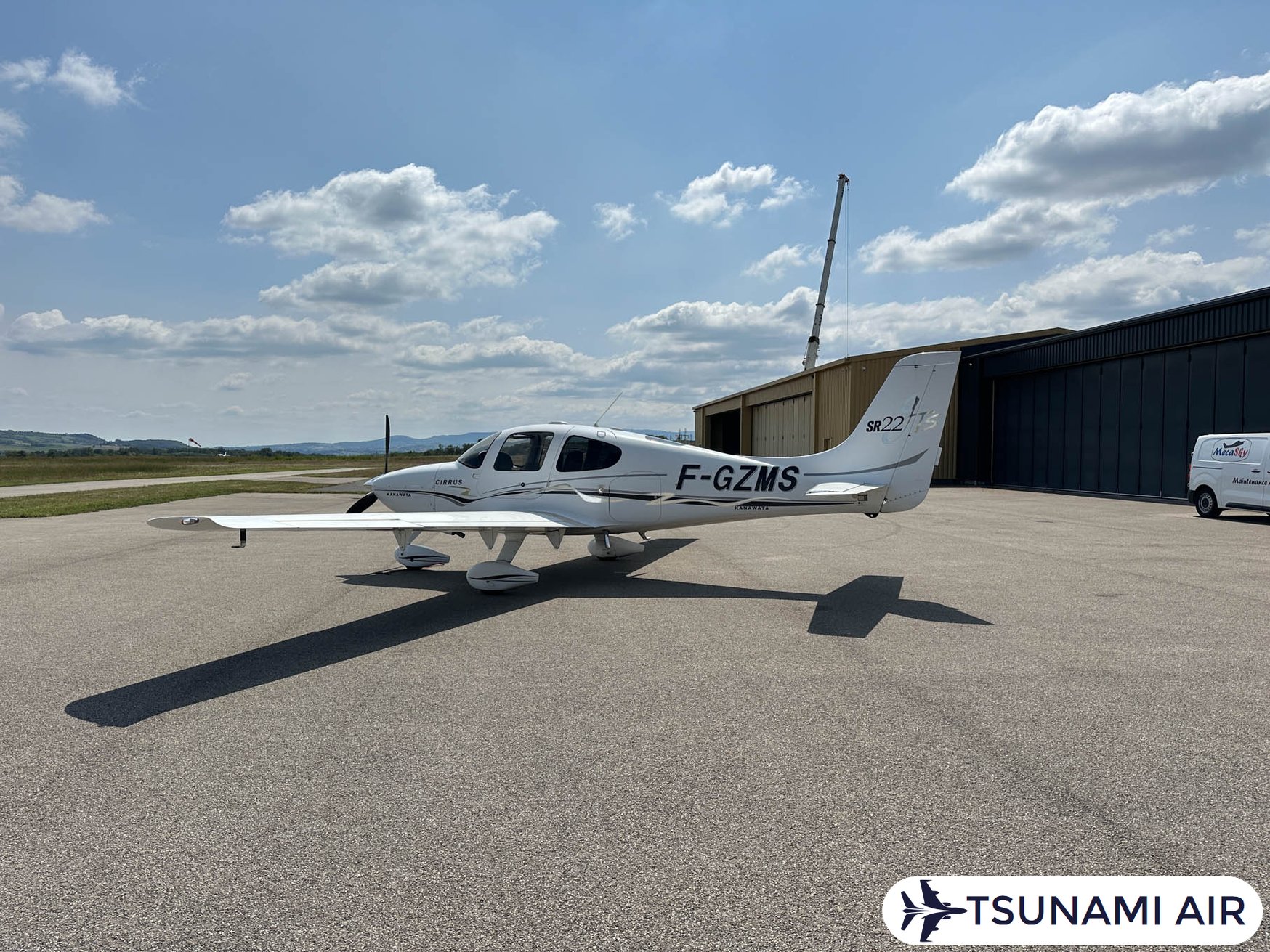
USD $260,000.00
Single EngineReg Number
F-GZMS
Total Time
2270 hrs
Location
United Kingdom
Year
2005
Seller: AT Aviation
Phone: +441404642006
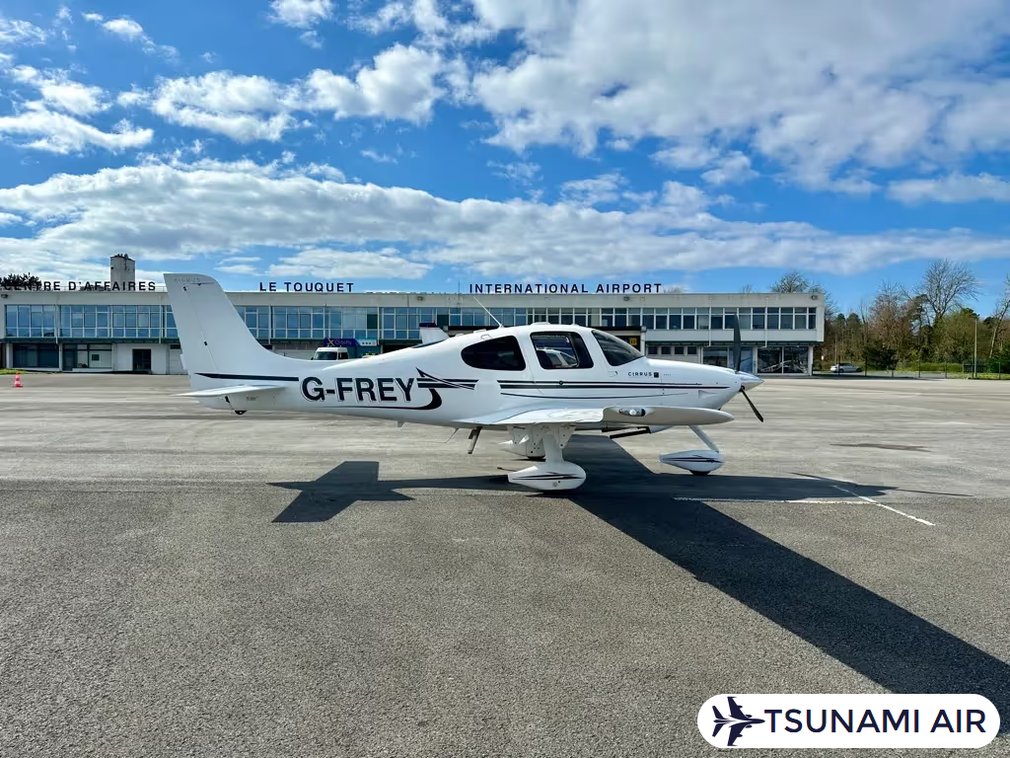
USD $255,000.00
Single EngineReg Number
G-FREY
Total Time
1894 hrs
Location
United Kingdom
Year
2008
Seller: AT Aviation
Phone: +441404642006
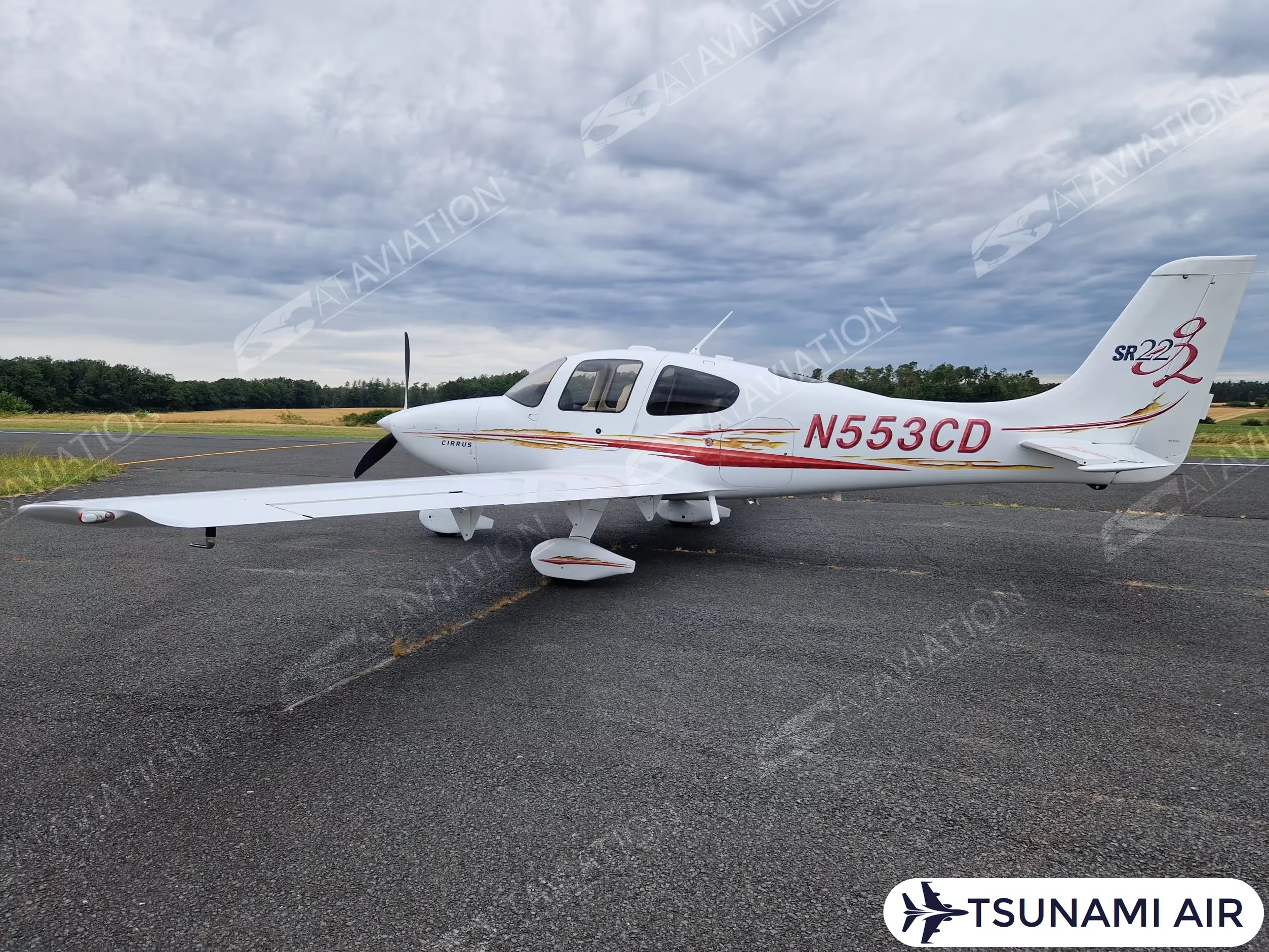
USD $250,000.00
Single EngineReg Number
N553CD
Total Time
1209 hrs
Location
United Kingdom
Year
2005
Seller: AT Aviation
Phone: +441404642006
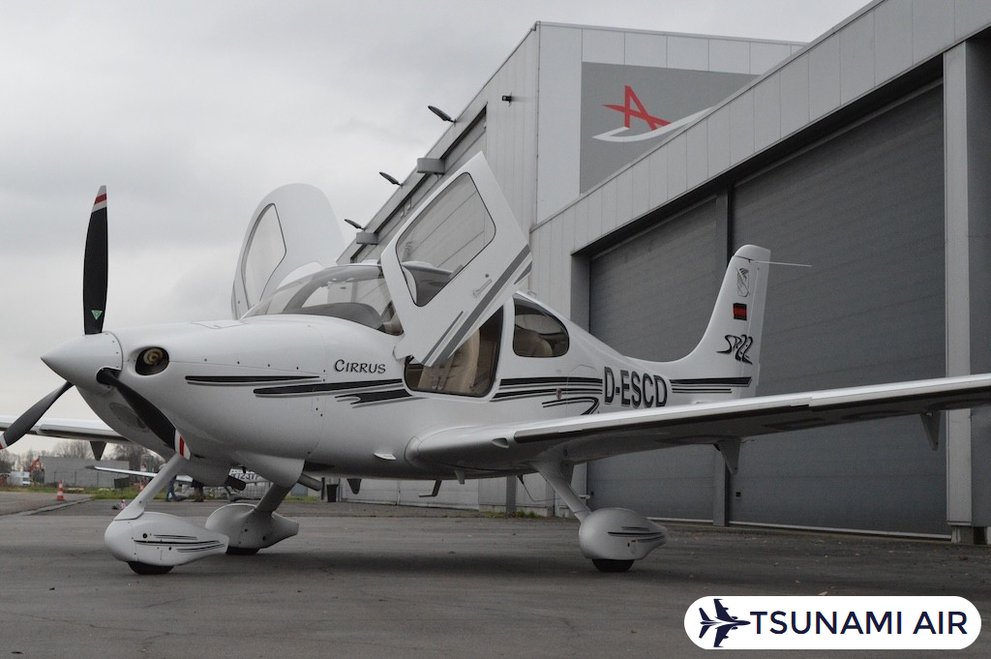
USD $237,000
Single EngineReg Number
D-ESCD
Total Time
1470 hrs
Location
Belgium
Year
2004
Seller: Philippe Polman
Phone: +1 231 256 1401
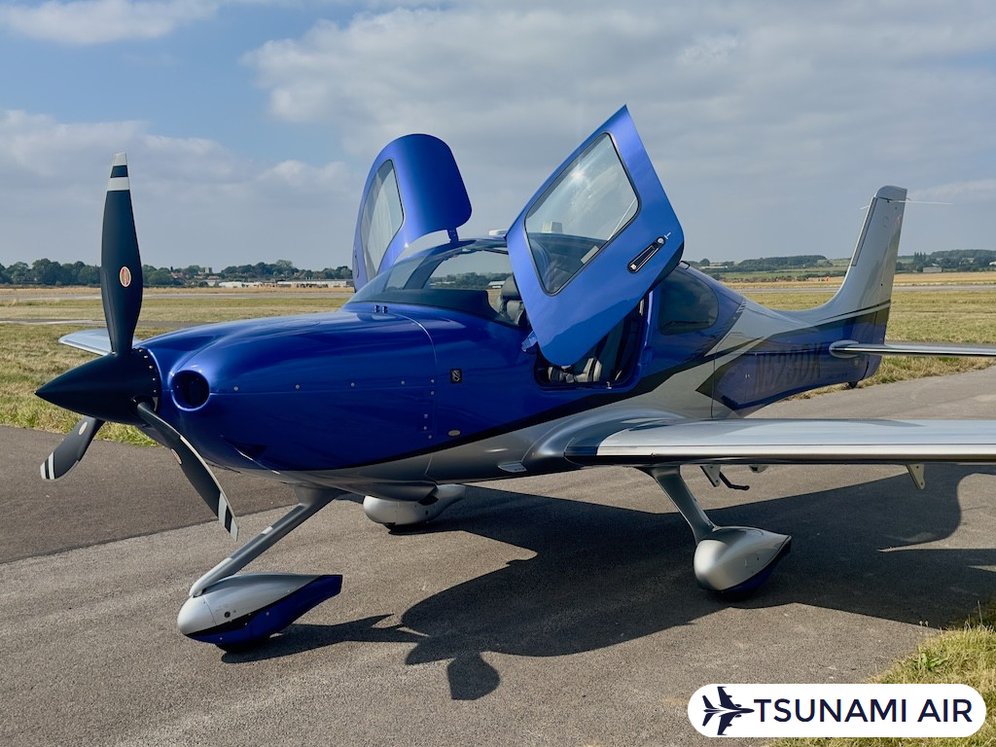
USD $1,279,000
Single EngineReg Number
N523DK
Total Time
250 hrs
Location
United States
Year
2024
Seller: Robbie Conington
Phone: +44 7833 098 566
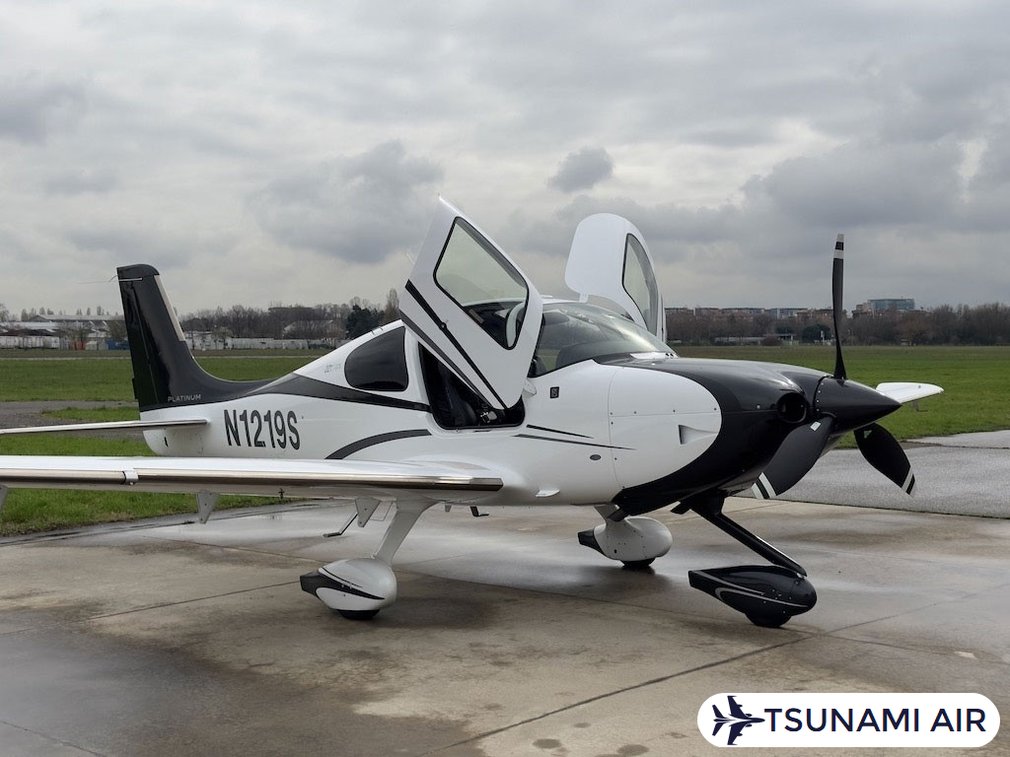
USD $N/A
Single EngineReg Number
N1219S
Total Time
576 hrs
Location
Italy
Year
2015
Seller: Philippe Polman (US)
Phone: +1 231 256 1401
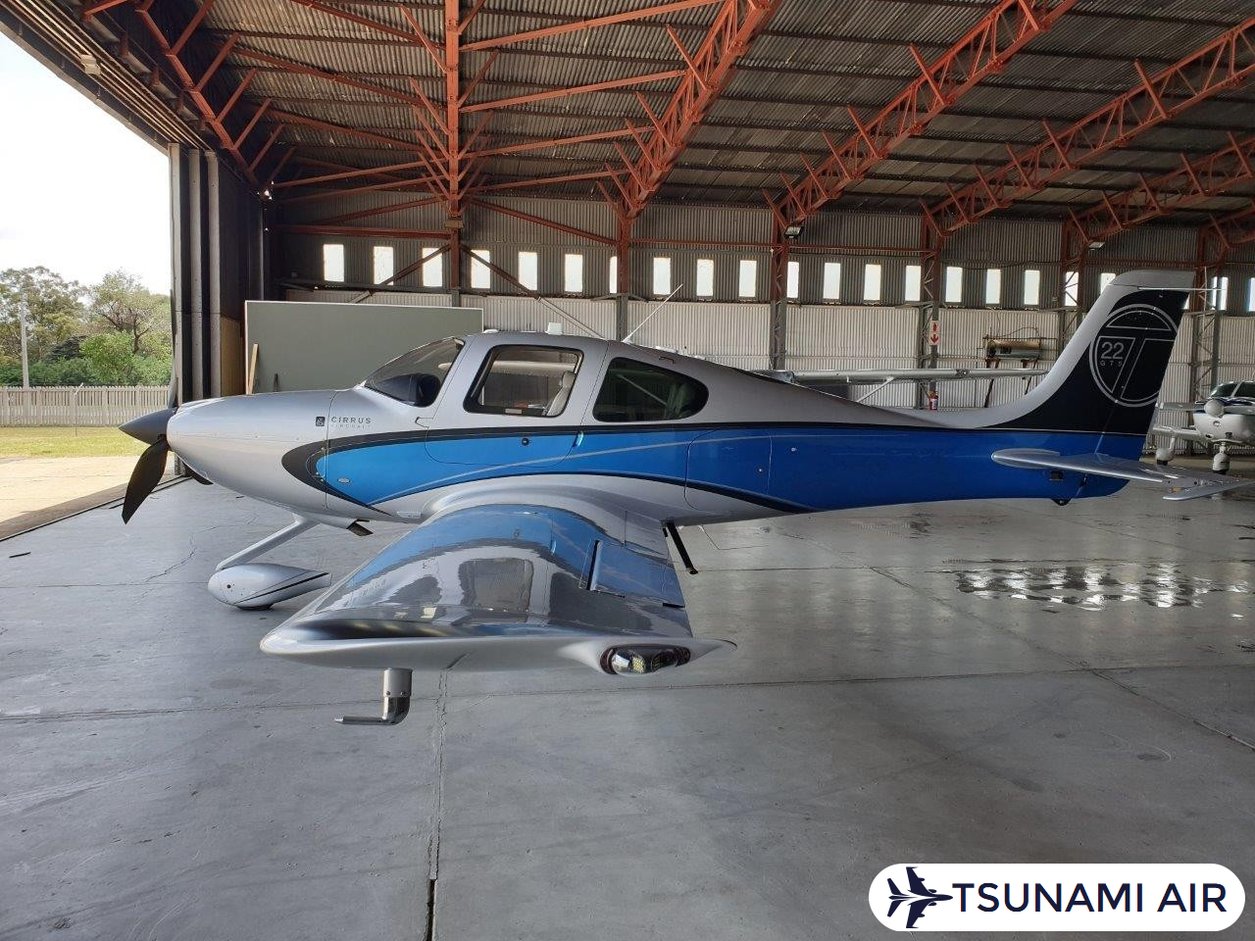
USD $N/A
Single EngineReg Number
-
Total Time
590 hrs
Location
South Africa
Year
2012
Seller: Tyron Warne
Phone: +27 (0) 823 431 878
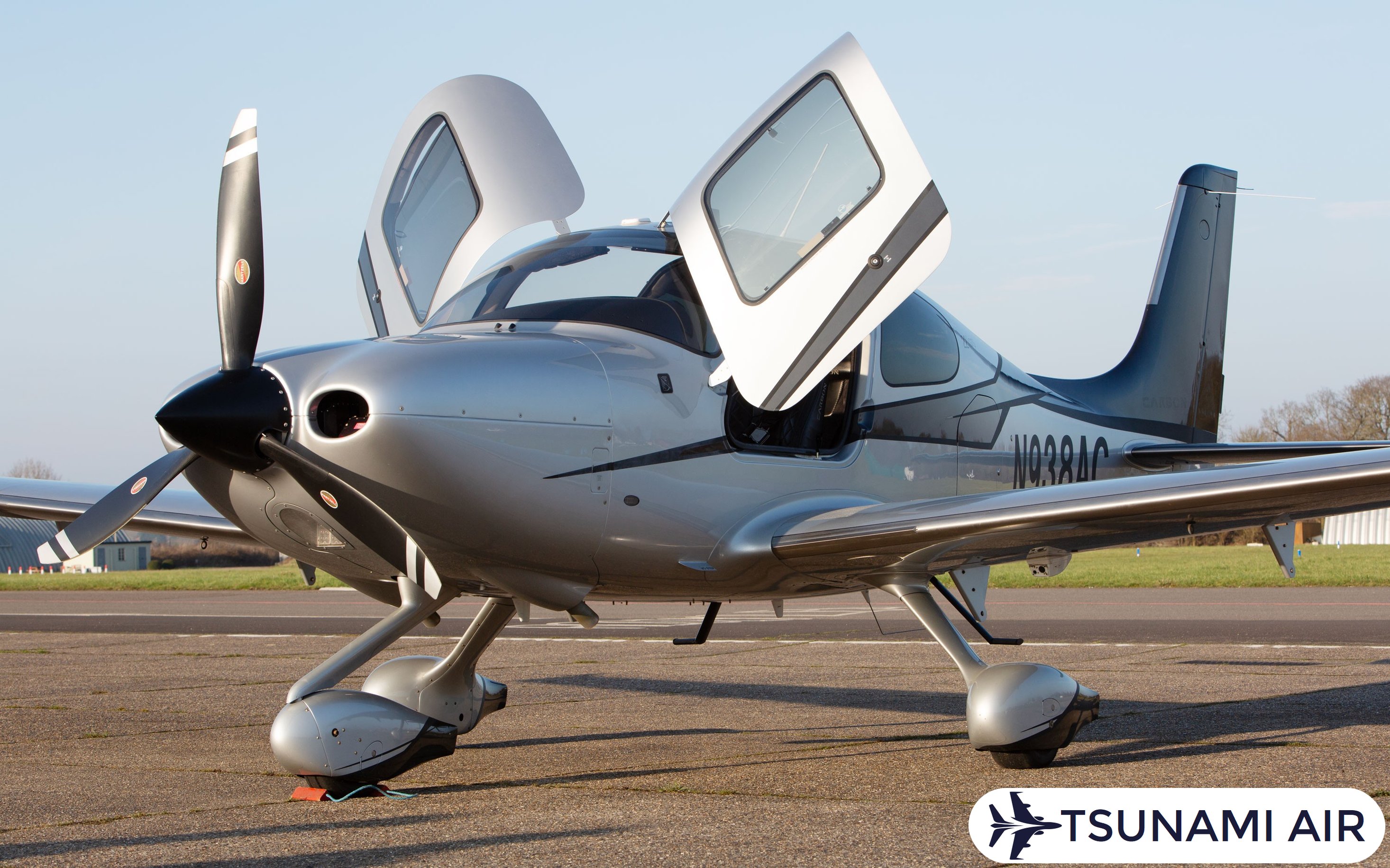
USD $539,000
Single EngineReg Number
N938AC
Total Time
1060 hrs
Location
United Kingdom
Year
2014
Seller: Charles Kimbell
Phone: +44 (0)7801 661 114
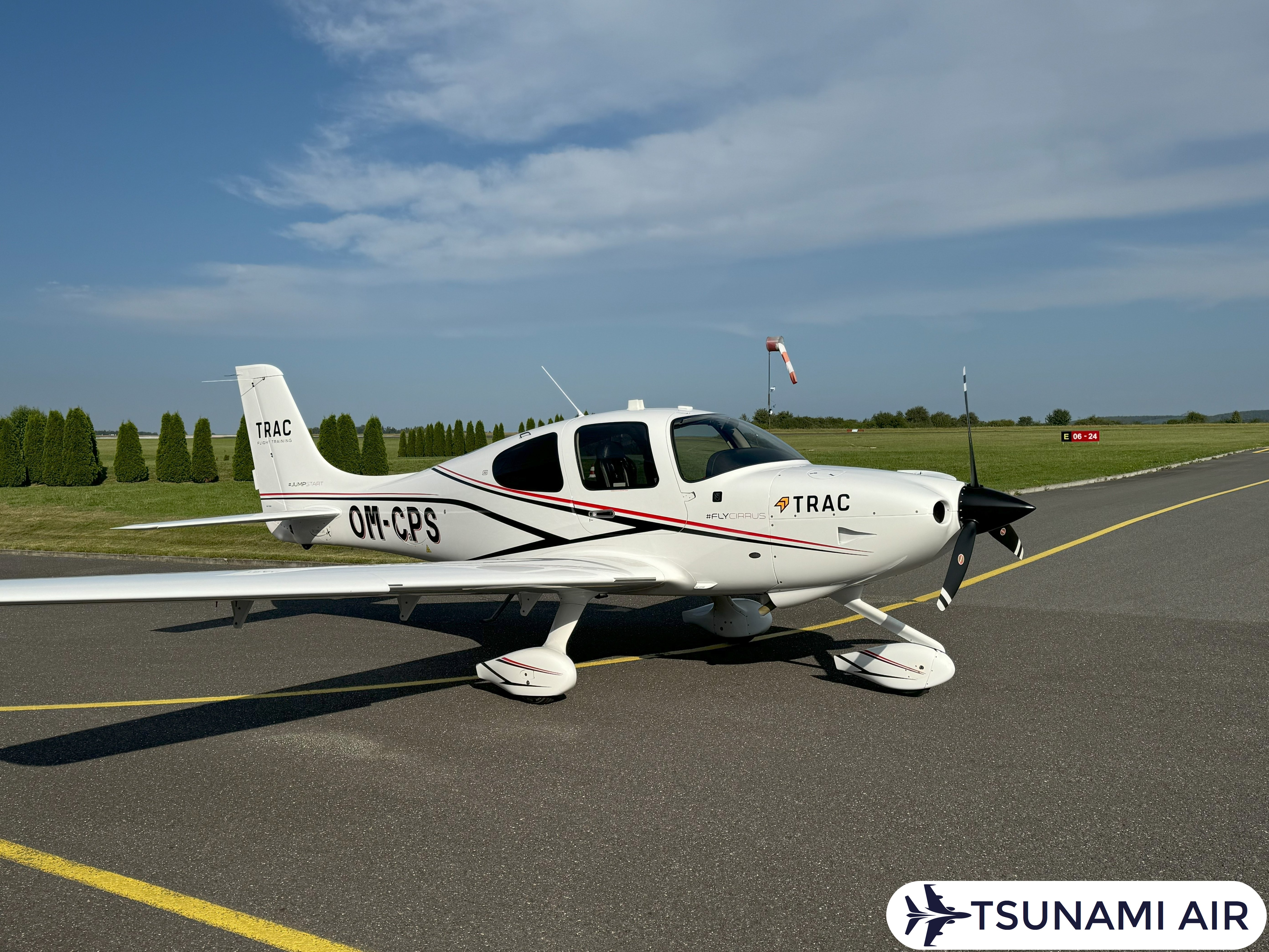
USD $N/A
Single EngineReg Number
EASA (FAA EASILY ON REQUEST)
Total Time
790 hrs
Location
Czech Republic
Year
2020
Seller: Dobroslav Chrobák
Phone: +420 773 066 706
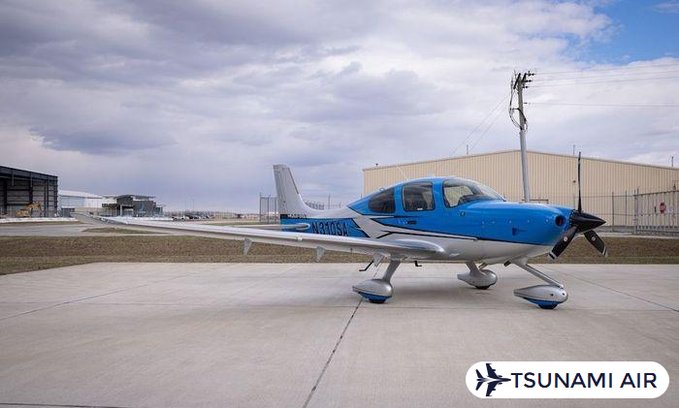
USD $695,000
Single EngineReg Number
N310SA
Total Time
1625 hrs
Location
United States
Year
2019
Seller: Lone Mountain Aircraft Sales - John Arnold
Phone: (888) 566-3686
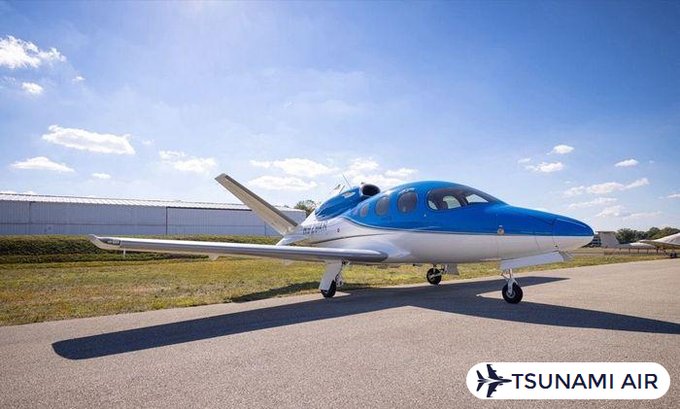
USD $2,825,000
JetReg Number
N929AR
Total Time
890 hrs
Location
United States
Year
2020
Seller: Lone Mountain Aircraft Sales - John Arnold
Phone: (888) 566-3686
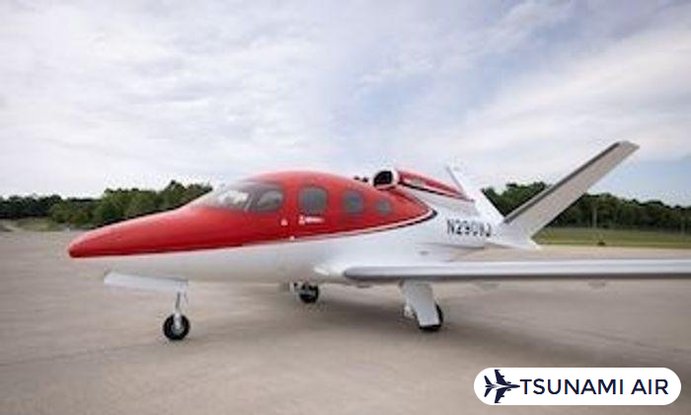
USD $3,095,000
JetReg Number
N290VJ
Total Time
597 hrs
Location
United States
Year
2022
Seller: Lone Mountain Aircraft Sales - Mark Rogers
Phone: (888) 566-3686
The Cirrus aircraft brand is a global leader in personal general aviation. Founded by Alan and Dale Klapmeier in 1984, Cirrus Aircraft is known for manufacturing piston-powered personal aircraft and pioneering safety features like the Cirrus Airframe Parachute System.
Cirrus Aircraft leads in technological advancements within general aviation. The SR22, SR20, and Vision SF50 stand as key models showcasing the brand’s innovation. The Cirrus Airframe Parachute System (CAPS) defines safety standards across all aircraft. CAPS allows the entire airframe to descend safely during emergencies, boosting survivability for pilots and passengers. The SR22 incorporates advanced avionics like the Cirrus Perspective+ by Garmin, balancing speed, safety, and ease of handling. This model achieves a maximum cruise speed of 183 knots and includes robust composite construction. The SR20 serves as an entry-level aircraft with strong performance attributes. It features the same CAPS technology while prioritizing simplicity and reliability for student pilots.
The Vision SF50 marks Cirrus Aircraft's entry into personal jet innovation. Powered by a Williams International FJ33-5A turbofan engine producing 1,846 pounds (837 kilograms) of thrust, this jet achieves a maximum cruise speed of 311 knots (576 kilometers per hour). The Vision SF50 integrates cutting-edge technology like the Garmin G3000 glass cockpit and advanced safety systems. A notable feature is its whole-aircraft parachute system, a first for civilian jets. The design accommodates up to seven occupants with comfort and accessibility via a clamshell door. Composite materials enhance structural integrity while reducing weight.
Cirrus Aircraft maintains excellence in manufacturing processes, guaranteeing quality in every aircraft. The company’s influence extends across modern general aviation trends, setting benchmarks in safety and performance. Headquarters in Duluth, Minnesota, serve as the hub for production and innovation. The Cirrus brand remains synonymous with forward-thinking design and reliable aircraft technology.
The features of Cirrus planes are outlined below.
The features of Cirrus planes include advanced avionics, the Cirrus Airframe Parachute System (CAPS), composite carbon fiber airframes, spacious cabins with panoramic windows, ergonomic seating, high-performance engines, and innovative safety systems like the Safe Return Emergency Autoland.
Advanced avionics in Cirrus SR22 performance include the Garmin G1000 NXi, providing comprehensive flight data and navigation capabilities. The Continental TSIO-550-K engine powers the SR22, achieving speeds up to 183 knots (210 mph) and a range of 800 nautical miles. Fuel efficiency is optimized through aerodynamic design and robust yet economical engines. The SR22 incorporates the Cirrus Perspective+ avionics suite, refining situational awareness and control. The modern design of the SR22 contributes to responsive handling and stability during flights.
The Cirrus Vision SF50 technology includes the Williams FJ33-5A turbofan engine, producing 1,846 pounds (837.2 kilograms) of thrust. The Vision Jet achieves a maximum cruise speed of 311 knots (576 km/h) and operates at altitudes up to 31,000 feet (9,448 meters). A range of 1,200 nautical miles highlights its operational efficiency. The Vision Jet features the Perspective Touch+ avionics suite, incorporating advanced flight control and navigation systems. Aerodynamic design and efficient propulsion systems make the Vision Jet a standout in personal jet aviation.
The specifications of the Cirrus jet include a cabin length of 11 ft 6 in (3.51 m), a wingspan of around 38.7 ft (11.8 m), and a height of about 10 ft 11 in (3.33 m). The cabin dimensions provide a width of 5 ft 1 in (1.55 m) and a height of 4 ft 1 in (1.24 m).
The specifications of the Cirrus jet are given in the table below.
Specification | Value |
Aircraft Model | Cirrus Vision Jet (G2) |
Length | 30 ft 11 in (9.42 m) |
Wingspan | 38 ft 8 in (11.79 m) |
Height | 10 ft 11 in (3.32 m) |
Cabin Width | 5 ft 1 in (1.56 m) |
Cabin Height | 4 ft 1 in (1.24 m) |
Capacity | 1 crew + up to 6 passengers (7 total) |
Engine | Williams FJ33-5A turbofan |
Engine Thrust | 1,846 lbs |
Maximum Cruise Speed | 311 knots (576 km/h or KTAS) |
Economy Cruise Speed | 256 knots |
Stall Speed (Flaps Deployed) | 67 knots |
Range | 1,200 nautical miles (2,222 km) |
Extended Range (Certain Configurations) | Up to 1,275 nautical miles |
Maximum Altitude | 31,000 ft (8,534 m operational, 31,000 ft certified limit) |
Climb Rate | 1,609 ft/min |
Takeoff Distance | 2,036 ft (620 m) |
Maximum Takeoff Weight | 6,000 lbs (2,722 kg) |
Maximum Ramp Weight | 6,040 lbs (2,740 kg) |
Empty Weight | 3,550 lbs (1,610 kg) |
Useful Load | 2,450 lbs (1,111 kg) |
Avionics System | Garmin G1000 NXi / Perspective Touch+ |
Emergency Autoland | Safe Return™ system |
Safety Features | Cirrus Airframe Parachute System (CAPS) |
Airframe Materials | Carbon fiber and advanced lightweight composites |
Fuel Type | Jet-A |
Cabin Features | Pressurized cabin, panoramic windows, modular seating |
Navigation Systems | Dual WAAS GPS, synthetic vision technology |
Landing Gear Configuration | Tricycle configuration |
The Cirrus Vision Jet achieves a maximum cruise speed of 311 knots (576 km/h), with an economy cruise speed of 256 knots, balancing performance and fuel efficiency. The aircraft offers a maximum range of 1,200 nautical miles (2,222 km), extending to 1,275 nautical miles in certain configurations, making it suitable for regional and transcontinental trips. Operating at a maximum altitude of 31,000 feet (8,534 m), the jet ensures high-altitude capabilities while maintaining stable low-speed handling with a stall speed of 67 knots when flaps are deployed. The wingspan of 38 ft 8 in (11.79 m) contributes to its aerodynamic efficiency under wing assembly aerodynamics, while the cabin dimensions of 5 ft 1 in (1.56 m) width and 4 ft 1 in (1.24 m) height optimize passenger comfort.
The Cirrus Vision Jet has an empty weight of 3,550 lbs (1,610 kg) and a maximum takeoff weight of 6,000 lbs (2,722 kg), with a useful load of 2,450 lbs (1,111 kg). Powered by a Williams FJ33-5A turbofan engine producing 1,846 lbs (837 kg) of thrust, the jet minimizes engine fuel consumption while delivering robust engine power. The avionics system integrates Garmin G1000 NXi with Perspective Touch, boosting navigation, communication, and autopilot functionalities. Dual WAAS GPS systems and synthetic vision technology refine avionics system navigation precision and situational awareness, guaranteeing advanced cockpit control layout.
Constructed with lightweight carbon fiber materials, the airframe material ensures structural integrity and durability. The unique V-tail design reduces drag through advanced wing assembly aerodynamics, contributing to optimal cirrus jet performance. The wing assembly wing span of 38 ft 8 in (11.79 m) supports efficient lift generation and stability during flight. Airframe structural integrity is further reinforced by the Cirrus Airframe Parachute System, designed for emergency scenarios and underscoring the jet's commitment to safety.
The tricycle landing gear configuration provides stability during takeoff and landing, aiding reliable landing gear load capacity. Equipped with a modern Garmin G3000-based Perspective Touch+ cockpit system, the aircraft advances cockpit instrumentation and ergonomics. The fuel system operates using Jet-A fuel, guaranteeing compatibility and efficiency with a focus on streamlined engine power management. Panoramic windows and modular seating configurations enhance cabin comfort, while the pressurized cabin maintains optimal environmental conditions for up to seven occupants, including the pilot.
The performance of the Cirrus jet is at a maximum cruise speed of 311 knots. The jet, powered by a Williams FJ33-5A turbofan engine, provides 1,846 pounds (837.2 kilograms) of thrust. The Cirrus Vision Jet cruises efficiently at 300 knots and has a range of 1,200 nautical miles.
The performance of the Cirrus jet is given in the table below.
Parameter | Value |
Manufacturer | Cirrus Aircraft |
Classification | Single-engine, single-pilot light jet |
Engine Type | Williams International FJ33-5A turbofan engine |
Thrust | 1,846 lbs |
Maximum Cruise Speed | 311 KTAS (knots true airspeed) |
Top Speed | 345 mph (576 km/h) |
Typical Cruise Speed | 300 KTAS |
Range (with lightweight payload) | 1,275 nautical miles (2,222 km or 1,381 miles) |
Range (with maximum payload) | ~600 nautical miles (1,100 km or 690 miles) |
Rate of Climb | 1,609 feet per minute (ft/min) |
Service Ceiling | 31,000 feet (9,400 meters) |
Stall Speed with Flaps | 67 knots |
Takeoff Distance | 2,036 feet (620 meters) |
Landing Ground Roll | 1,628 feet (496 meters) |
Empty Weight | ~3,550 pounds (1,600 kg) |
Maximum Gross Weight | 6,040 pounds (2,741 kg) |
Fuel Capacity | 2,000 pounds (907 kg) |
Fuel Consumption (Max Cruise) | ~462 lbs (210 kg)/hour |
Fuel Consumption (Economical Cruise) | ~315 lbs (143 kg)/hour |
Avionics System | Cirrus Perspective by Garmin G3000 |
Safety Features | Cirrus Airframe Parachute System (CAPS), Emergency Autoland |
Seating Capacity | Up to 7 occupants (including pilot) |
Certification | Certified for single-pilot operation |
Maximum Operating Altitude | 31,000 feet |
Design Focus | Personal aviation, safety, efficiency, ease of operation |
The Cirrus Vision Jet SF50 achieves a maximum speed of 311 knots and cruises efficiently at 300 knots. The range extends up to 1,200 nautical miles (2,222 kilometers) under optimal conditions, reducing to 600 nautical miles (1,111 kilometers) with a maximum payload of 1,328 pounds (602 kilograms). Fuel consumption measures 462 pounds (210 kilograms) per hour at maximum cruise and decreases to 315 pounds (143 kilograms) per hour during economical cruising. A service ceiling of 31,000 feet (9,448.8 meters) ensures safe high-altitude operations while maintaining performance standards. The rate of climb reaches 1,609 feet (500 meters) per minute, allowing efficient ascent to cruising altitudes. Takeoff distance measures 2,036 feet (620.5 meters), with a landing ground roll of 1,628 feet (496.2 meters).
The Cirrus Vision Jet SF50 model is powered by a Williams FJ33-5A turbofan engine producing 1,846 lbs (837 kg) of thrust. This single-engine light jet is certified for single-pilot operation, emphasizing accessibility and ease of use. Advanced avionics like the Garmin G3000 suite enhance operational precision. The aircraft includes safety innovations like the Cirrus Airframe Parachute System and an emergency autoland feature. Operational conditions including weather, altitude, and temperature influence performance metrics like takeoff, cruising, and landing phases. Technical certification standards assure compliance with regulatory requirements for personal aviation.
Cirrus Aircraft performance integrates innovative design with practical usability. The Cirrus Vision Jet SF50 competes effectively against other light jets in its class through features like modular seating for up to five adults and advanced cabin amenities. Fuel efficiency contributes to reduced operational costs without compromising speed or range capabilities. Comparisons with twin-engine business jets highlight trade-offs in performance due to the single-engine configuration. Maintenance considerations reflect the simplicity of design, appealing to private operators seeking reliable and cost-effective solutions in personal aviation.
The minimum runway length required for a Cirrus jet is 3,192 ft (973 m) under standard conditions. The Cirrus Vision Jet demands a landing distance of 1,600-1,700 feet (488-518 meters) on a standard day. Environmental factors like airport elevation, temperature, weight, and obstacles influence the exact runway length required. Higher elevations and warmer conditions increase the takeoff distance to about 5,956 feet (1,815 meters) at a 5,000-foot (1,524 meters) elevation. Pilots feel comfortable landing on any runway longer than 5,000 feet (1,524 meters) under normal conditions and uncontaminated surfaces. Safe and reliable operation under various conditions suggests a longer runway length of 5,000 feet (1,524 meters).
The Cirrus Vision Jet requires a takeoff distance of 2,036 ft (620.8 m) under standard conditions. This distance extends to 3,192 ft (973.1 m) when clearing an obstacle over 50ft (15.24 m) at maximum takeoff weight. Pilots calculate a total distance of 4,187 ft (1,276 m) as the distance required for safe operation under standard conditions. This accounts for both takeoff and landing distances while incorporating necessary safety margins. A minimum runway length of 5,000 ft (1,524 m) ensures reliable performance across various operational scenarios. Longer runways accommodate environmental variables like temperature, elevation, and weight, providing pilots with greater confidence during operations.
Airports at higher elevations present issues, with a 6,752-foot (2,058 meters) elevation demanding a runway length of 5,850 ft (1,783 meters). High-altitude conditions increase the required runway length due to reduced air density, which affects engine performance and lift generation. Pilots operating in these environments must account for extended takeoff and landing distances to guarantee safe and efficient performance.
Environmental factors like temperature, elevation, and weight directly influence takeoff and landing distances. Warmer temperatures and higher elevations reduce air density, increasing the takeoff distance to 5,956 feet (1,815 meters) at a 5,000-foot (1,524 meters) elevation under hot conditions. Wet runways further extend landing distances by at least 15%, requiring a minimum of 5,783 feet (1,763 meters) at maximum landing weight. Pilots prioritize runways longer than 5,000 ft (1,524 m) to maintain safety margins under less favorable conditions.
The engine used in the Cirrus jet is the Williams FJ33-5A turbofan engine. The Williams FJ33-5A engine delivers 1,846 (8.21 kilonewtons) pounds-force of thrust. Williams International manufactures the Williams FJ33 engine known for fuel efficiency and reliability. The Williams FJ33 engine contributes to the Vision Jet's range and service ceiling.
The Williams FJ33-5A engine in the Cirrus Vision Jet generates a maximum thrust of 1,846 pounds-force, aligning with both the 1,846 lb takeoff thrust limit and the maximum continuous thrust limit. This precise calibration ensures consistent performance during important phases of flight while maintaining operational safety. The G2 Vision Jet retains the same power plant configuration, leveraging the single engine design to deliver efficient jet-level performance.
The single engine configuration of the Vision Jet distinguishes it as the only civilian-certified single-engine jet currently in production. This design choice reduces complexity and enhances operational affordability compared to twin-engine light jets. The Cirrus jet engine contributes to lower fuel consumption, allowing extended range capabilities while maintaining simplicity in maintenance and operation. A single Williams FJ33-5A engine powers the aircraft, enabling cost-effective transitions for pilots accustomed to piston aircraft.
Williams International manufactures the FJ33-5A turbofan engine, known for its fuel efficiency and reliability. The engine’s optimized performance directly enhances the Vision Jet’s range, which exceeds 1,200 nautical miles under optimal conditions. Reliability remains a cornerstone of the engine's design, guaranteeing stable operation across diverse flight scenarios. The rear fuselage-mounted engine location further improves aerodynamic efficiency, complementing the jet’s overall performance metrics.
The engine’s capabilities enable the Vision Jet to achieve a maximum operating altitude of 31,000 feet (9,448.8 meters), aiding efficient flight operations in the very light jet category. The single engine design facilitates a maximum cruise speed of 311 knots, suitable for regional flights and personal or small business use. Advanced safety features, including a whole-aircraft parachute system, enhance the Vision Jet’s operational safety while accommodating up to six passengers plus one pilot.
Cirrus planes are fuel-efficient compared to competitors, in private jets and piston single-engine categories. The Cirrus Vision Jet burns 70 gallons (265 liters) per hour, less than the Cessna Citation M2, and the SR22 consumes 14-18 gallons (53-68 liters) per hour, efficient for its class.
Fuel-efficient refers to the amount of fuel consumed per mile or hour under specific operating conditions. Environmental impact and varying flight scenarios play a part in determining efficiency metrics. Cirrus aircraft fuel consumption shows the SR22 consuming 14-18 (53-70 liters) gallons per hour and the Vision Jet consuming 50-70 (190-265 liters) gallons per hour depending on conditions. Competitors like Mooney International Corporation fuel consumption highlight the M20 series burning 12 gallons (45.4 liters) per hour. Cessna engine performance varies widely, with models like the Citation M2 consuming 110 gallons (416 liters) per hour at lower altitudes and 83 gallons (314 liters) per hour at higher altitudes. Diamond aircraft fuel consumption is notably low, with the DA42 burning 6-8 gallons (22.7-30.3 liters) per hour due to efficient diesel engines.
Flight conditions like cruise speed, altitude, and takeoff influence fuel efficiency across different aircraft models. The Cirrus SR22 engine efficiency is notable during cruise, consuming 14-16 gallons (53-60 liters) per hour. The Cirrus Vision SF50 jet efficiency is evident at maximum cruise, burning 69 gallons (261 liters) per hour. Beechcraft fuel consumption in models like the Bonanza ranges from 14-16 gallons per hour (53-61 liters per hour). Piper aircraft fuel consumption in the Archer model averages 8-10 gallons (30-38 liters) per hour, balancing performance and efficiency. Varying operational scenarios, including payload capacity and speed demands, directly affect fuel burn rates across these aircraft types.
Additional parameters impacting fuel efficiency include maintenance costs, operational expenses, and performance factors like range and speed. The Cirrus planes range includes the SR22's capability of 800-1,000 nautical miles and the Vision Jet's range of 1,275 nautical miles. Diamond aircraft aerodynamics contribute to reduced drag and boosted fuel economy, while Beechcraft aerodynamics feature streamlined designs promoting stability. Cirrus aircraft aerodynamics incorporate streamlined bodies to minimize drag and maximize efficiency. Mooney International Corporation engine efficiency is renowned for its piston engines, in the M20 line, which burns about 12 gallons (45.4 liters) per hour. Piper aircraft engine efficiency is highlighted in the M500/M600, burning 30-35 gallons (113.56-132.49 liters) per hour, reflecting its turboprop configuration.
No, Cirrus planes like the SR22 are not pressurized, but the Vision SF50 jet is pressurized. The Cirrus SR22 operates as a non-pressurized aircraft with a maximum altitude of 17,500 feet (5,334 meters). Pilots require supplemental oxygen above 10,000-12,500 feet (3,048-3,810 meters) for safe operation. The Cirrus Vision SF50 jet integrates a pressurized cabin capable of maintaining a cabin altitude of 8,000 feet (2,438 meters) at cruising altitudes up to 28,000 feet (8,534 meters). Advanced automation in the SF50's pressurization system optimizes cabin conditions using inputs like landing airport elevation and proposed cruising altitude. The SR22 lacks this capability, limiting its operational ceiling compared to the Vision Jet.
The different Cirrus plane models include the SR20, SR22, SR22T, and Vision Jet. The SR Series G7 and Vision Jet G7 represent advanced avionics and safety technology in the Cirrus FLEET.
The different Cirrus plane models are listed in the table below.
Model | Engine Type | Cruise Speed (knots/km/h) | Range (nautical miles/km) | Key Features |
Cirrus SR20 | Continental IO-360 | 155 knots / 287 km/h | 850 nautical miles / 1,574 km | Entry-level, CAPS, G7 avionics available |
Cirrus SR22 | Continental IO-550 | 183 knots / 339 km/h | 1,207 nautical miles / 2,237 km | High-performance, CAPS, G7+, Emergency Autoland |
Cirrus SR22T | Turbocharged IO-550 | 183 knots / 339 km/h | Enhanced high-altitude performance | Turbocharged, CAPS, G7+ |
Cirrus Vision SF50 | Williams FJ33 | 300 knots / 556 km/h | 1,100 nautical miles / 2,037 km (approx.) | Jet-powered, CAPS, Autoland, V-tail design |
Cirrus VK-30 | Conceptual | Not applicable | Not applicable | High-performance concept aircraft (not produced) |
The Cirrus SR20 serves as an entry-level model in the SR series, featuring a Cirrus SR20 piston engine rated at 200 horsepower. Certified in 1998, the SR20 cruises at 155 knots (287 km/h) and is widely used as a Cirrus SR20 training aircraft due to its affordability and ease of handling. The Cirrus SR22, a high-performance variant, offers amplified capabilities with a Cirrus SR22 piston engine producing 310 horsepower. Certified in 2000, the SR22 achieves a cruise speed of 183 knots (339 km/h) and a range of about 1,207 nautical miles (2,237 km). Both models incorporate the Cirrus Airframe Parachute System (CAPS), a safety feature designed for emergency landings.
The Cirrus SR22T introduces a turbocharged engine, delivering increased performance at higher altitudes compared to the standard SR22. Equipped with a Cirrus SR22T turbocharged engine, this model retains the high-performance characteristics of the SR22 while offering better efficiency in high-altitude environments. The SR22T extends the versatility of the SR series, appealing to pilots seeking greater operational flexibility. Like other Cirrus aircraft, the SR22T integrates the Cirrus Airframe Parachute System, guaranteeing consistent safety across the lineup.
The Cirrus Vision SF50 represents an advancement as a single-engine jet within the Cirrus fleet. Powered by a Williams FJ33 turbofan engine producing 1,846 lbf (8.21 kN) of thrust, the Vision Jet cruises at 300 knots (556 km/h). Certified in 2016, the Vision SF50 features a low-wing cantilever monoplane design with retractable tricycle landing gear. The aircraft accommodates up to seven occupants and includes both the Cirrus Airframe Parachute System and an emergency autoland system, refining safety for personal and commercial use.
The SR Series G7 and Vision Jet G7 models highlight cutting-edge avionics and safety technologies. The SR Series G7 incorporates the Garmin Perspective Touch+ suite, providing high-resolution displays and advanced navigation tools. The Vision Jet G7 builds on these features with an upgraded Williams FJ33-5A turbofan engine and a service ceiling of 31,000 feet (9,449 m). Both models introduce autonomous emergency landing systems, further solidifying Cirrus Aircraft's commitment to innovation and safety in aviation.
The difference between the Cirrus SR20 and the Cirrus SR23 is explained in the table below.
Feature | Cirrus SR20 | Cirrus SR23 |
Engine Power | 200 HP | 310 HP |
Fuel Capacity | 56 gallons (211.96 liters) | 92 gallons (348 liters) |
Range | 700 NM (1,296.44 km) | >1,000 NM (>1,852 km) |
Maximum Speed | 185 knots | 200 knots |
Advanced Systems | CAPS | CAPS, TKS anti-ice FIKI certification |
Avionics | Perspective Touch + (in newer models) | Perspective Touch + |
Climb Rate and Efficiency | Standard | Enhanced |
The difference between the Cirrus SR20 and the Cirrus SR23 is that the SR23 features a more robust engine, larger fuel capacity, and better performance capabilities. The Cirrus SR23 engine delivers 310 horsepower, surpassing the SR20's 200-horsepower engine. The SR23 fuel capacity increases to 92 gallons (348 liters), enabling a longer range of over 1,000 nautical miles (1,852 kilometers) compared to the SR20's 700 nautical miles (1,296 kilometers). The SR23 achieves a maximum speed of 200 knots, outperforming the SR20's 185 knots. Advanced systems like TKS anti-ice and FIKI certification further distinguish the SR23 from the SR20. Both models integrate the Cirrus Airframe Parachute System (CAPS) for boosted safety.
The Cirrus SR20 engine delivers 200 horsepower, while the Cirrus SR23 engine provides 310 horsepower. This increase in power enhances the SR23's performance capabilities, allowing for better climb rates and operational efficiency in demanding conditions. The SR23 achieves a maximum speed of 200 knots, surpassing the SR20's 185 knots, due to its more robust engine output. Pilots operating the SR23 benefit from refined high-altitude and hot weather performance compared to the SR20.
The Cirrus SR23 fuel capacity increases to 92 gallons (348 liters), enabling an extended range of over 1,000 nautical miles (1,852 kilometers). In contrast, the Cirrus SR20 fuel capacity is 56 gallons (211.96 liters), limiting its range to around 700 nautical miles (1296.44 kilometers). This larger fuel capacity in the SR23 supports longer flights without refueling, making it suitable for cross-country travel. The SR23's boosted endurance aligns with its design for pilots requiring greater operational flexibility.
The SR23 includes the TKS anti-ice system and FIKI certification, features absent in the SR20. Both models integrate the Cirrus Airframe Parachute System (CAPS), a hallmark of Cirrus aircraft safety features. These shared technologies reinforce the manufacturer's commitment to pilot protection and emergency preparedness across its lineup.
Cirrus Aircraft is recognized as an innovative manufacturer in general aviation. The company incorporates cutting-edge technology into its designs, like the Perspective Touch+ avionics system found in newer models. The Cirrus SR23 exemplifies this focus on advancement by offering superior performance metrics and additional capabilities. Over the years, Cirrus delivered numerous SR20 and SR23 units globally, solidifying its reputation for combining safety, performance, and technological leadership.
The safety features of Cirrus planes include the Cirrus Airframe Parachute System and the Safe Return Autoland System. CAPS allows pilots to deploy a full-aircraft parachute in emergencies, while Safe Return enables passengers to autonomously land the Vision Jet with a single button press. Tough seat belts guarantee passenger safety during turbulence or emergencies.
Advanced avionics play a vital part in the safety features of Cirrus aircraft. The Cirrus SR22 glass cockpit incorporates digital displays that enhance pilot situational awareness and simplify flight data management. Garmin Perspective Touch+ avionics provide terrain avoidance warnings and other safety mechanisms to prevent controlled flight into terrain. Electronic stability systems incorporated into Cirrus models assist pilots in maintaining stable flight conditions. These systems reduce the risk of stalls and spins by limiting aircraft maneuvers within safe parameters.
The Cirrus Vision SF50 includes advanced collision avoidance systems that alert pilots to potential hazards. Synthetic Vision Technology (SVT) and Traffic Advisory Systems (TAS) deliver real-time traffic and obstacle information. Emergency systems like the Safe Return Autoland enable passengers to command the aircraft to locate the nearest suitable airport and execute an autonomous landing during urgent situations. Redundant power systems and pressurization further enhance safety in the Vision SF50. Studies show CAPS deployments have saved over 253 lives as of March 2023, underscoring the effectiveness of Cirrus airframe parachute system safety mechanisms.
Cirrus aircraft combine innovative technologies to guarantee occupant protection and reduce accident risks. The Cirrus Airframe Parachute System CAPS defines the brand's commitment to aviation safety. Advanced avionics and electronic stabilization systems contribute to the safety profile of Cirrus planes. These features establish Cirrus aircraft as leaders in general aviation safety innovations.
The cost of a Cirrus jet varies based on condition and model year, starting from around $1.8 million for older models and reaching up to $2.7 million for new and fully equipped versions. New Cirrus jets are priced higher than used ones.
New Cirrus Vision jets have a base price starting at $2,380,000, while fully equipped models reach up to $2,750,000. Pre-owned Cirrus Vision jets sell for an average of $1,500,000, with specific configurations priced around $1,900,000. GlobalAir.com lists the average price for a Cirrus Vision jet at $876,665, though this figure varies based on model year and condition. Certain late-model or well-maintained units occasionally command prices as high as $3,000,000.
Operational costs add to the overall expense of owning a Cirrus Vision jet. The hourly charter rate averages $4,592, reflecting the jet’s positioning in the private aviation market. Annual fixed ownership costs, including insurance and hangar fees, total $180,000. These figures highlight the financial commitment required beyond the initial purchase price.
Customization and equipment packages directly influence the final cost of a Cirrus Vision jet. Base models start at $2,380,000, but additional features increase the price to $2,750,000. The G2+ version has a price range between $3,200,000 and $3,600,000. Market demand affects pricing for newer or upgraded models. Prices for used Cirrus Vision jets fluctuate depending on age, hours flown, and overall condition.
Cirrus planes are worth buying for pilots who value high performance, advanced safety features, and strong resale value. The SR22 models, including the turbocharged SR22T, offer excellent maneuverability and balanced controls. Focus on versions with upgraded capabilities ensures popularity and continuous technological updates for general aviation needs.
Private pilots and flight schools benefit most from owning a Cirrus plane due to the combination of Cirrus SR20 reliability and advanced safety features. The SR20 model, with its fuel efficiency of 10-15 gallons per hour (37.85-56.78 liters per hour), serves as an economical choice for training programs. Experienced pilots prefer the cirrus SR22 performance variant, which offers better avionics like the Garmin G1000 NXi and achieves speeds over 160 knots while maintaining reasonable operating costs. The Vision SF50 caters to those seeking jet capabilities, featuring a max cruise speed of 311 knots and seating for up to seven passengers. Each model supports diverse applications, ranging from personal leisure flights to expert aviation needs.
Purchase prices range from $500,000 for the SR20 to $2 million for the Vision SF50. Maintenance expenses remain competitive compared to other high-performance aircraft, backed by strong resale value attributed to Cirrus Aircraft brand reputation. Performance metrics like the SR22's cruising speed and fuel consumption under 15 gallons per hour (56.8 liters per hour) contribute to operational efficiency. Advanced safety technologies, including the cirrus airframe parachute system safety enhancement, provide peace of mind and justify investment in these aircraft.
Comparing new versus used models reveals distinct advantages based on buyer priorities. Certified pre-owned Cirrus planes retain value well, especially versions equipped with upgraded avionics like the Perspective suite. Seating capacity varies across models, with the SR20 accommodating four occupants and the Vision SF50 offering space for five adults and two children. Engine types differ, with the SR22 utilizing piston engines and the Vision SF50 powered by a single Williams FJ33-5A turbofan engine capable of reaching altitudes up to 31,000 feet (9,448.8 meters). These attributes align with specific requirements, guaranteeing suitability for diverse aviation scenarios.
Rising fuel costs impact operational budgets, yet the cirrus SR20 fuel efficiency mitigates this concern. Economic conditions favor investments in reliable assets like Cirrus aircraft, bolstered by their innovative design and modern technology. Regulatory issues related to certifications or compliance remain minimal due to established cirrus aircraft safety records. Industry trends toward automation and safety enhancements further solidify the appeal of Cirrus models, making them a strategic choice for long-term usability in general aviation.
The ideal buyer for a Cirrus aircraft is an affluent individual or business executive who values luxury, exclusivity, and advanced technology in aviation. Owner/operators with regional travel needs form the core customer base. Business owners, executives, and real estate professionals rely on Cirrus aircraft for efficient personal and business travel. Advanced technology, including touchscreen controls and state-of-the-art avionics, attracts buyers seeking cutting-edge features. The whole-plane parachute system enhances safety, offering peace of mind to pilots and passengers alike. Strong residual values and versatile use for both business and leisure make Cirrus aircraft a smart investment for high-net-worth individuals.
The ideal buyer for a Cirrus aircraft possesses financial capability, with the SR22 model priced between $700,000 and over $1 million. High-net-worth individuals’ affluence allows them to invest in luxury aviation while leveraging strong residual values as part of their financial strategy. Owner-operators self-sufficiency makes Cirrus aircraft appealing due to their ease of flying and advanced technology. Certified pilots certification is maintained through ongoing training programs offered by Cirrus, guaranteeing safe operations. Buyers include novice pilots requiring additional instruction as well as seasoned aviators capable of utilizing sophisticated avionics. Aircraft usage ranges from personal leisure travel to efficient business trips, catering to executives seeking mobility and entrepreneurs valuing versatility.
Cirrus aircraft are designed for multiple purposes, augmenting owner-operators versatility. Personal travel benefits from comfort and performance, while business applications highlight efficiency and time savings. The SR22 model provides options suitable for different skill levels, making it adaptable for flight training or commercial use. Advanced technology includes touchscreen controls and state-of-the-art avionics, which attract buyers prioritizing innovation. Business executives’ efficiency is maximized through streamlined travel solutions, while high-net-worth individuals’ luxury preferences align with the exclusivity and brand reputation of Cirrus aircraft.
Initial purchase costs reflect the premium nature of Cirrus aircraft, but financing support simplifies acquisition for first-time buyers. Ongoing expenses like maintenance, insurance, and compliance are managed through comprehensive resources provided by Cirrus. Technical support networks assure availability of services globally, improving reliability for owners. Cirrus aircraft safety features, including the CAPS parachute system, prioritize security for pilots and passengers. Certified pilots’ proficiency is aided by communal engagement and training programs, fostering expertise among operators. Aviation professionals’ knowledge ensures optimal performance, reinforcing trust in the brand’s commitment to excellence.
The typical maintenance costs of owning a Cirrus plane depend on regular maintenance inspections and operating expenses. Maintenance inspection costs vary depending on the condition of the aircraft and usage patterns. Hourly expenses for a Cirrus SR22 include amounts ranging from $600 to $1,000 per hour.
The typical maintenance costs of owning a Cirrus plane are given in the table below.
Maintenance Cost Component | Typical Cost |
Hourly Maintenance Cost (Regular Inspections) | $15-$30 per hour flown |
Oil Change | $300 every 40 hours |
Annual Inspection | $5,000-$7,000 |
Parachute Repack | $20,000-$30,000 every 8-10 years |
Engine Overhaul | $75,000-$100,000 every 2,000 hours |
Fuel Costs | $100-$108 per hour (17.8 gallons/hour at $6/gallon) |
Insurance Premiums | $500-$5,000 annually |
Hangar Rental | $1,200-$3,600 annually |
Total Variable Costs (SR22, 200 hours/year) | $39,528 per year |
Total Fixed Costs (SR22, 200 hours/year) | $83,880 per year |
Overall Annual Maintenance Costs | $5,000-$10,000 |
Total Ownership Costs (SR22, 200 hours/year) | $125,000-$175,000 annually |
Hourly maintenance costs for a Cirrus SR22 range from $15 to $30 per flight hour, depending on the aircraft's age and condition. A 2001 model incurs hourly maintenance expenses of $17.85 per hour. Routine maintenance includes oil changes costing $300 every 40 hours, providing thorough inspections by mechanics during servicing. Annual inspections represent an expense, averaging $5,000 to $7,000, with total annual maintenance costs estimated between $5,000 and $10,000.
Major maintenance involves substantial investments like parachute repack costs of $20,000 to $30,000 required every 8 to 10 years. Engine overhauls, necessary around every 2,000 flight hours, cost $75,000 to $100,000. Total variable costs for operating a Cirrus SR22 amount to $39,528 per year based on 200 annual flight hours, while fixed costs reach $83,880 per year under the same usage. For the Vision SF50 jet, total variable costs escalate to $685,440 annually based on 450 flight hours.
The support Cirrus provides to its customers includes a global network of Factory Direct and Authorized Service Centers. Service centers offer maintenance, technical support, and expedited delivery of genuine parts. Cirrus team ensures aircraft remain reliable and assists with training for air safety.
Cirrus Aircraft provides comprehensive support through multiple channels, guaranteeing customers have access to assistance when needed. Customers reach out via phone, email, live chat, or online help desks for immediate guidance. Self-service resources like forums and documentation enhance accessibility to information. Cirrus Customer Support Customer Service ensures timely responses to inquiries, while Cirrus Customer Support Technical Assistance addresses technical issues efficiently.
Levels of support range from basic/free assistance to premium tiers offering faster response times. Premium services include dedicated account managers and customized solutions for enterprise clients. Cirrus Service Network Maintenance Facilities are strategically located worldwide, providing quick and efficient service. Cirrus Service Network Regional Support ensures local expertise is available for regional needs. These facilities maintain FAA Part 145 certification, underscoring adherence to quality and safety standards.
The scope of support covers software and hardware issues, with global and multi-language accessibility. Cirrus Maintenance Program Preventative Maintenance and Cirrus Maintenance Program Scheduled Maintenance assure aircraft remain operational and reliable. Over 200 authorized service centers deliver maintenance, repairs, and warranty support. These centers offer specialized services like composite/paint repairs, avionics upgrades, and flight training service support. Cirrus Pilot Training Flight Instruction and Cirrus Pilot Training Safety Training prepare pilots thoroughly through standardized programs.
Cirrus Warranty Warranty Coverage and Cirrus Warranty Guarantee provide peace of mind regarding parts and labor. Cirrus Owners and Pilots Association Community Network fosters peer support and shared experiences among owners and pilots. Cirrus Financing and Cirrus Lease options make aircraft ownership more accessible. Cirrus Aircraft Integrated Support Network ensures consistency and quality across all locations, reinforcing the company’s reputation for excellence.
Cirrus planes are not cost-effective for flight schools due to high rental rates. Rental rates for Cirrus aircraft range from $255 to $300 per hour. Cheaper alternatives like the Cessna 172 cost around $99 per hour. Overall training costs in a Cirrus are higher, making it less budget-friendly for students.
Flight schools evaluating Cirrus planes must account for acquisition costs, operational expenses, and long-term financial metrics. The Cirrus SR22 purchase price ranges from $800,000 to $1 million, while the Cirrus Vision SF50 acquisition cost reaches $1.96 million for new models and $1.7 million for pre-owned ones. Traditional trainers like the Cessna 172 are cheaper, enabling flight schools to allocate budgets more efficiently. Fuel efficiency engine performance is a vital factor, with the SR22 consuming 12-15 gallons per hour (45.4-56.8 liters per hour) of avgas and the Vision SF50 burning 60-69 GPH (227.1-261.2 liters per hour) of Jet-A fuel. Operational costs fuel expenditure for the SR22 averages $100 to $200 per hour, whereas the Vision SF50 operating cost rises to $1,300 to $1,800 per hour. These figures highlight the disparity in flight schools’ operational expenses when choosing between Cirrus aircraft and conventional trainers.
Cost-effectiveness analysis financial metrics extend beyond hourly rates to include insurance, depreciation, and resale value. Cirrus aircraft safety features, like the Cirrus Airframe Parachute System (CAPS), reduce accident-related costs and insurance premiums. Depreciation trends show that the SR22 retains value better than the Vision SF50 due to its simpler piston engine and lower maintenance costs service interval. Aircraft financing loan terms and interest rates play a pivotal part in managing upfront costs. Leasing options provide flexibility for flight schools budget constraints, allowing them to integrate advanced aircraft without excessive financial strain. Evaluating these parameters ensures a comprehensive understanding of life cycle cost analysis.
Training duration varies based on the aircraft used. Cirrus planes incorporate modern avionics and advanced systems, which streamline learning curves for students transitioning to elaborate aircraft. Flight schools training efficiency improves as fewer hours are required to achieve proficiency compared to traditional trainers. However, the higher rental rates of Cirrus aircraft offset some benefits of reduced training time. Large flight schools with robust budgets find Cirrus planes cost-effective for advanced training programs, while smaller schools prioritize affordability and opt for cheaper alternatives like the Cessna 172. Usage frequency impacts overall costs, with frequent utilization justifying the investment in Cirrus aircraft performance.
Maintenance costs and repair expenses contribute to the total lifecycle cost of Cirrus planes. The SR22 requires regular maintenance every 50-100 flight hours, incurring moderate expenses due to its composite construction and advanced avionics. The Vision SF50 demands specialized maintenance, increasing operational costs and manpower expenses over time. Despite higher initial outlays, Cirrus aircraft offer competitive resale potential, mitigating long-term financial impact. Cost-effectiveness analysis ROI considers all aspects, including cirrus SR22 fuel consumption, maintenance schedules, and operational costs fuel expenditure, assuring flight schools make informed decisions aligned with their objectives.
The pros and cons of buying a used Cirrus plane are given in the table below.
Pros | Cons |
Performance and reliability | High operating costs ($20,000+/year fixed, $100+/hour flight) |
Safety features (e.g., whole-airframe parachute system) | Maintenance/repair costs higher than other piston planes |
Transition training available for used plane owners | Certain models report issues like nose wheel shimmy |
Used planes enable acquisition of more aircraft than new ones within budget | Cramped cabin on longer flights |
Avoids "certified pre-owned" premium | High upfront purchase prices for many models |
Strong community/lifestyle appeal | Rapid depreciation impacts resale value |
Advanced avionics (e.g., Garmin G1000 in SR22, G3000 in Vision SF50) | |
Fuel-efficient: SR22 consumes ~14-18 gallons/hour | |
Competitive availability in used market | |
Residual value retention better than competitors | |
Comprehensive maintenance records often available | |
Pre-purchase inspections ensure condition matches prices | |
Affordable entry points compared to new aircraft | |
Prices stabilize in 2025 | |
Increased availability in 2025 | |
Range of pricing options ($500k-$3.6M) |
Used Cirrus planes enable buyers to acquire more aircraft than they could afford new, with increased range and cabin size. Operating costs incur high expenses, with fixed costs estimated at $20,000+ per year and flight costs at $100+ per hour. Maintenance and specialized repairs cost more compared to other piston planes, due to advanced avionics systems like the Garmin G1000. Certain used models report issues like nose wheel shimmy and engine sensor problems, requiring thorough pre-purchase inspections. Buyers purchase used planes without paying the full "certified pre-owned" premium, but rapid depreciation causes used prices to drop quickly, impacting resale value.
Cirrus aircraft reputation ensures strong market appeal due to innovative designs and robust safety features. The used aircraft market availability expands options for buyers seeking affordability without compromising performance or technology. Buyers benefit from comprehensive pre-purchase inspection completeness, which identifies potential issues in avionics system capabilities and structural integrity. Maintenance history documentation provides transparency, reducing uncertainty during transactions. Ownership costs and expenses remain a consideration, with fixed annual costs exceeding $20,000 and hourly flight expenses surpassing $100. Cirrus SR22 fuel efficiency achieves 14-18 gallons (53-68 liters) per hour, appealing to cost-conscious pilots. Depreciation value retention remains favorable compared to competitors, though rapid price decline affects long-term equity. Safety features protection includes the whole-airframe parachute system, refining occupant survival in emergencies. Insurance considerations costs reflect adjustments for advanced technology and perceived risks, with liability coverage addressing legal obligations.
High operating costs present issues for owners of used Cirrus planes. Specialized maintenance required for advanced avionics systems like the Garmin G1000 increases expenses. Incomplete or inconsistent maintenance history service records exacerbate concerns about reliability and future repair needs. Pre-purchase inspection thoroughness uncovers discrepancies like nose wheel shimmy and engine sensor problems, checking mechanical soundness before purchase. Warranty programs coverage applies to new aircraft, leaving used buyers reliant on seller support or negotiated terms. Avionics system modernity dictates adaptability to regulatory mandates, sometimes necessitating additional investment in upgrades. Cirrus Vision SF50 usability simplifies transitions between models, aiding operational efficiency for private jet owners. Used aircraft market pricing fluctuates based on supply and demand dynamics, impacting affordability and resale prospects.
Depreciation residual value underscores the significance of strategic timing when buying or selling Cirrus planes. Initial cost savings achieved through purchasing used aircraft offset long-term financial implications of residual value loss. High demand in the used aircraft market demands competition, driving prices higher for popular models like the SR22 and Vision SF50. Safety features redundancy ensures continued functionality even if primary systems fail, reinforcing confidence in day-to-day operations. Insurance considerations risk evaluates exposure levels, adjusting premiums accordingly for high-performance machines. Cirrus Vision SF50 technology redefines expectations for personal jet travel, incorporating user-friendly systems and advanced navigation tools.